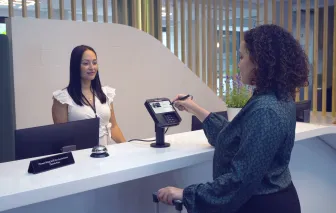I haven’t made an empirical study of it, but I’m sure that in the last few years manufacturers of wallets – the sort you put in your back pocket, coat or bag, not the digital kind – have been making increasingly thinner versions of an item which most of us use every day in one form or another. Why? Because consumers who previously needed room for what sometimes amounted to a small deck of loyalty cards, have been ditching them in droves, either because they’ve given up on the traditional loyalty programme they subscribed to and forgotten about (and which never brought them much anyway), or because the programme itself ditched cards and relies on ‘data’, that’s in the ‘cloud’ (and which, just to make it easy, requires a password that has to have eight alpha-numeric characters but can’t include your partner’s birthday or your dog’s name).
All that to protect a reward worth less than a euro …? Is it worth it? A lot of people didn’t think so and gave up on loyalty programmes. So, Loyalty 2.0, (which was really Loyalty 1.0 in search of a makeover) never really became what it could have been. Maybe now is the time for Loyalty 2.0 to really happen.
A few years ago, any self-respecting article on loyalty would have started with: ‘the average number of loyalty cards per person is 9.3 in country A, compared to 6.4 in country B, with an average of 3.6 transactions per month/year/decade’. It made for an easy opening paragraph, but what it said above all was that traditional loyalty programmes weren’t really working. People were signing up – and costing brands money in the process – but weren’t really engaging with those brands.
Loyalty is all about engagement
That was then. Now, the fact that at best half of those cards were used on a regular basis has meant that the more advanced retailers have moved on from the simple identifier card based on earning and burning, to more sophisticated engagement with their loyal customers. We take a look here at what’s been happening in loyalty and how customer engagement at the point of sale is going to be a key driver in the future. For simplicity, I’ve excluded the big supermarket loyalty programmes. Not because they’re not interesting – they are, and they’re genuinely sophisticated – but their economics, and indeed their aims, are different to those of other types of programme designed to strengthen relationships between stakeholders.
One of the huge changes that has happened since Loyalty 1.0 is how identifying the customer and their transactions has become easier by using the payment card as the primary identifier with which to recognize the customer. At its most basic, this is done in the back office with transactions parsed and the bonus (cashback, points…) calculated on the relevant spend. It’s easy to set up – nothing to do at the POS and it’s fine insofar as it goes, but there is little or no dynamic interaction at the moment of purchase. The more sophisticated solutions interact in real time, on the terminal, with the customer, whether for earn or burn. It’s all about reducing friction at the point when the customer is most susceptible to positive messaging (she’s just bought something, so she’s happy) while being recognised for their worth (she’s just bought something, so she needs to be cosseted to ensure she’ll come back next time).
Either way, it’s safe to say that Loyalty 2.0 is, (finally), coming our way. The question is: why did it take so long? (But that’s a whole other story!).











